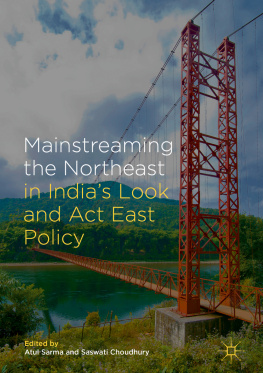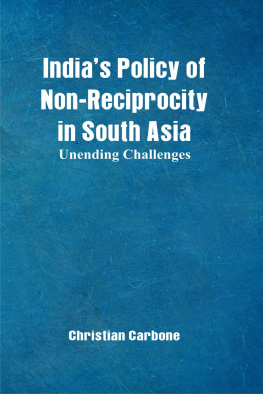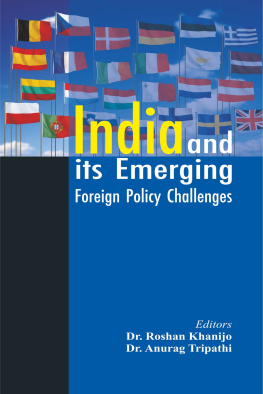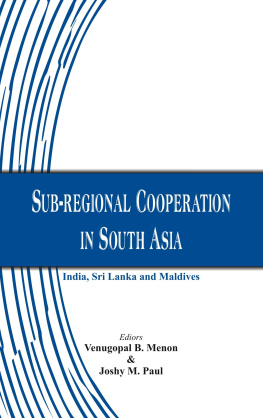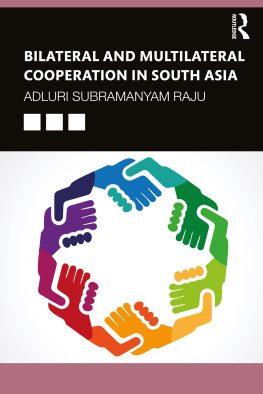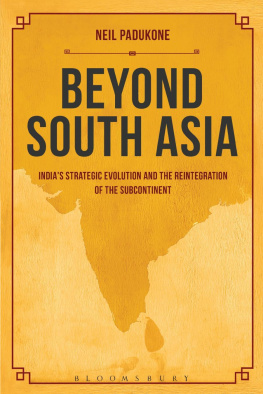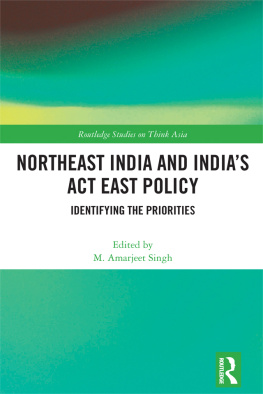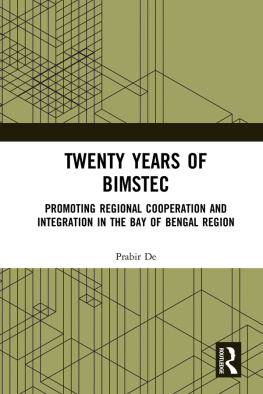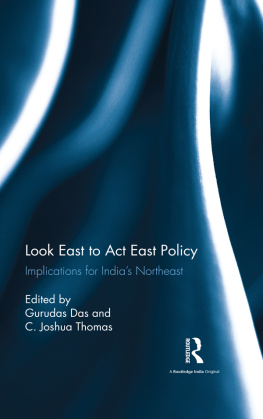1.1 Introduction
During the late 1980s at the behest of the then Prime Minister, Rajiv Gandhi, India began reviving its relations with South East and East Asia. The Annual Report of the Ministry of External Affairs ( MEA) for 199596 noted that there were hardly any high level contacts between India and the Association of South East Asian Nations ( ASEAN) prior to 1985; however, a definite trend emerged since then which indicated that ASEAN was interested in recuperating old relations with India with the restoration of political dialogue . During the next five years, the Indian Prime Minister visited Indonesia, Thailand, Myanmar (then known as Burma), Vietnam and also China in December 1988. India also hosted leaders from South East Asian countries like Suharto of Indonesia, Lee Kuan Yew of Singapore, Mahathir Mohammad of Malaysia, Nguyen Van Linh of Vietnam and Hun Sen of Kampuchea, as well as other ministers. The political exchanges between India and South East Asian countries during the eighties also focused on issues of trade and commerce, energy sharing and cooperation in the field of science and technology. Global political development at the end of the Cold War called for a pragmatic approach in Indias foreign policy. The economic exigency following the balance of payment crisis forced India to shelve its protective economic policies and liberalize. Its eastern neighbours offered a promising area of engagement. ASEAN, together with Japan, Korea and China, was economically the fastest growing region not only in Asia but globally as well. Business delegations led by the Federation of the Indian Chamber of Commerce and Industry (FICCI) visited ASEAN countries. Singapore became the focal point in Indias overseas investment promotion tours undertaken by the Indian Finance Minister and the Minister of State for Commerce in 1991. Singapore reciprocated and also actively supported Indias effort to join ASEAN as a dialogue partner. India became a Sectoral Dialogue Partner of ASEAN in 1992, a full ASEAN Dialogue Partner in 1995, and a member of the ASEAN Regional Forum ( ARF ) in 1996.
Indias engagement with East and South East Asian countries since the 1980s has largely been termed as Look East Policy although there is no official policy document which lays down the guidelines and principles. During his September 1994 visit to Singapore, the Indian Prime Minister, Narasimha Rao delivered a lecture entitled India and the AsiaPacific: Forging a New Relationship at the Institute of South East Asian Studies ( ISEAS) in which he emphasized Indias eagerness to join the future development path in the AsiaPacific region in the post-Cold War period. The term Look East Policy appeared in official records of India for the first time in the Annual Report of the Ministry of External Affairs (MEA) in 199596 and referred to Indias engagement in the ASEAN region with emphasis on economic and institutional relations. Delivering the 14th Singapore lecture in April 2002, Prime Minister A. B. Vajpayee said, I speak today on ASEAN and the AsiaPacific This region is one of the focal points of Indias foreign policy, strategic concerns and economic interests It is a fundamental fact of geography that India is in the immediate neighbourhood of ASEAN (ASEAN ). In December 2005 in his keynote address at the Special Leaders Dialogue of ASEAN Business Advisory Council in Kuala Lumpur, Malaysia, Indias Prime Minister, Manmohan Singh stated that, since 1992, the Government of India had launched a Look East Polic y which was not merely an external economic policy but also marked a strategic shift in Indias envisioned role in the changing global economic scenario. It was an attempt to reach out to Indias civilizational neighbours in South East and East Asia. At the Ninth IndiaASEAN summit in Bali, Prime Minister Manmohan Singh stated that Indias partnership with ASEAN was a key feature of the countrys foreign policy and the foundation of its Look East Policy (LEP). Indias engagement with its eastern neighbours has also been acknowledged by ASEAN. At the fourth IndiaASEAN summit held at Kuala Lumpur in December 2005, Indias support to the CLMV countries (Cambodia, Laos, Myanmar, Vietnam) in service sector, especially in English language training, satellite based networking , telemedicine services and super speciality health care facilities, was appreciated. LEP goes beyond economic cooperation today and includes defence and strategic partnership building as also regional cooperation for human resource development.
Indias eastward move is perceived as recognition of its physical contiguity and cultural and social proximity with South East Asia. At the 12th ASEANIndia Summit, Prime Minister of India, Narendra Modi declared that, externally, Indias LEP had become the Act East Policy ( AEP ). The thrust areas for the redefined regional engagement for India with the countries in this region would primarily be (1) markets (liberalization of foreign trade, direct investment, capital accounts and financial systems); (2) policy (intergovernmental cooperation and development of common institutions); (3) geopolitics (relationships between political power and geographic space). Regional engagement is expected to expand not only to the limits of production possibilities but also to facilitate the flow of academic and scientific collaboration, technology sharing, service growth and institutional cooperation . For the new government, renewing cultural and spiritual connectivity with Asia is as important as physical connectivity (Raja Mohan, 2015).
Indias renewed engagement with ASEAN since the nineties improved economic relations and ASEAN became the fourth largest trading partner of India. Annual trade had grown at an average rate of 22 per cent per annum during the decade of 200011and stood at US$76.53 billion in 201415. Investment flows have been substantial both ways, with ASEAN accounting for 12.5 per cent of investment flows into India since 2000. Foreign direct investment (FDI) inflows into India from ASEAN between April 2007 and March 2015 was US$32.44 billion, while FDI outflows from India to ASEAN countries, from April 2007 to March 2015, as per data maintained by the Department of Economic Affairs ( DEA) , was US$38.672 billion.
1.2 Northeast India and Indias Look East Policy
The articulation of LEP since the early 1990s raised the hope of a new development perspective for the Northeast Region of India by placing it as a gateway to the dynamic East and South East Asian economies. The scholars and development experts working on Northeast India had argued for a resurgence of the region by establishing trade links with the fast growing South East Asian countries under the aegis of LEP. There were apprehensions as well: the opening of the Northeast Region to South East Asian countries would add to the insecurity in the region which had been affected by cross-border conflicts and insurgency. While the Northeast continued to be trapped in the debate of security issues versus economic gains , Indias relations with ASEAN improved not only trade and business but also cultural and strategic security issues. However, Northeast India was left out of such engagements, even though it continentally connects to the region through Myanmar and shares certain commonalities in the economic and social spheres . Recognizing these shared commonalities and the physical contiguity, Government of India built the Friendship Road to Myanmar in 1996 and, following its inauguration, hosted the ASEAN car rally . Nothing much happened beyond the opening of designated border trade points and the carrying on of a bare minimum trade.

